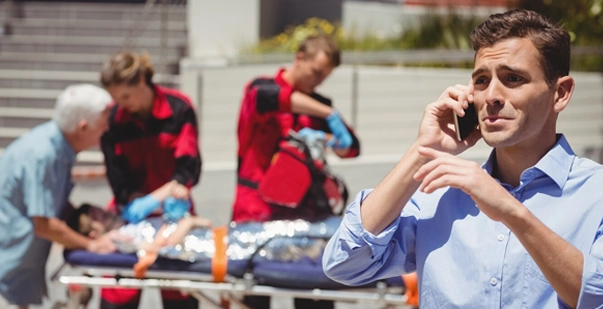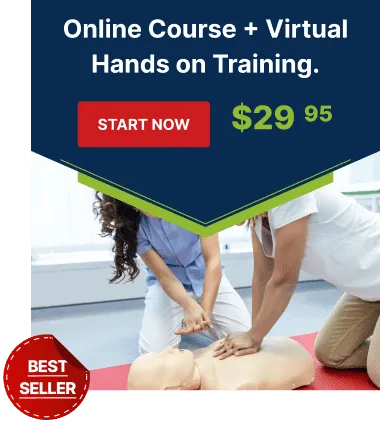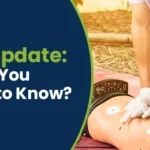Table of Contents:
- Introduction
- Understanding First Aid and Its Importance
- Core First Aid Skills You Should Know
- Emergency Action Steps: What to Do First
- First Aid for Common Injuries
- Building and Maintaining a First Aid Kit
- Final Thoughts
According to the World Health Organization, more than 5 million people die from injuries every year, and 20-50 million suffer non-fatal injuries that require emergency care. Unfortunately, many bystanders fail to act in such situations due to a lack of basic first aid or life support knowledge.
This underlines the importance of learning essential first-aid skills, which can significantly improve outcomes during critical moments before professional medical help arrives. With just a little training, you can be prepared to save lives. Considering the increasing demand for first-aid-certified individuals, this blog will cover the essential emergency first-aid protocols.
Master ACLS Now
Get ACLS certified with confidence
Understanding First Aid and Its Importance
First aid refers to the immediate assistance provided to a person suffering from a sudden illness or injury. These basic first-aid procedures are crucial for stabilizing a victim’s condition and preventing further harm before medical professionals can take over.
Learning emergency first aid is particularly important for common scenarios like heart attacks, accidents, or allergic reactions. A simple skill like knowing how to perform CPR or how to stop bleeding can make a huge difference in the critical minutes following an accident.
Core First Aid Skills You Should Know
Having a structured plan is key in first aid emergencies. Whether it’s a minor injury or a life-threatening situation, being prepared with the right knowledge can help you stay calm and act swiftly. Below are the top five techniques among the 10 basic first aid tips that everyone should learn to handle common emergencies effectively.
-
CPR and Rescue Breathing
One of the most essential first aid techniques is CPR (Cardiopulmonary Resuscitation), which is used when someone is unresponsive and not breathing. During a cardiac arrest, quick action is critical to keep oxygen circulating to the brain and other visceral organs.
- How to Perform CPR: Start with 30 chest compressions, pressing down hard and fast at the center of the chest. Follow it up with two rescue breaths by tilting the person’s head back, lifting the chin, and blowing into their mouth.
- When to Use Rescue Breathing: If the person isn’t breathing but still has a pulse, rescue breathing can help provide them with oxygen. Due to their smaller bodies, gentle compressions and breaths are recommended for children and infants.
-
Stopping Heavy Bleeding
Bleeding injuries are common, from small cuts to major wounds. If not controlled quickly, excessive bleeding can lead to shock and even death.
- Pressure Application: Use a clean cloth or gauze to press down firmly on the wound. Keep applying pressure until help arrives or the bleeding stops.
- Tourniquet Use: A tourniquet can be applied above the wound as a last resort for severe limb injuries. However, avoid improper use, as it can lead to tissue damage.
-
Treating Choking
Choking is a common first aid emergency, especially during meals. Abdominal thrusts (the Heimlich maneuver) are the most effective technique for removing blockages from the airway. Follow this procedure to perform abdominal thrusts:
- Stand behind the victim. Wrap your arms around the waist and thrust one fist forward, about at the navel level.
- Push inward and upward until the object is displaced.
-
Treating Shock
Shock occurs when the body isn’t getting enough blood flow, leading to a lack of oxygen in vital organs. Severe injuries, blood loss, or allergic reactions often cause it. Follow these steps to provide first aid for shock:
- Lay the person flat on their back and elevate their legs if possible to improve blood flow.
- The first responder should keep them warm using a blanket and try to reassure them until medical help arrives. Avoid giving them anything to eat or drink.
-
Handling Sprains and Fractures
Sprains and fractures are common injuries, especially during physical activities. While waiting for medical assistance, immobilizing the injured area is crucial. Here’s how you can manage sprains and fractures:
- Apply the R.I.C.E. method: rest, Ice, Compression, and Elevation.
- For fractures, avoid moving the injured limb and use a splint, if available, to keep the area immobilized.
Read More: Post-cardiac Arrest Care (ACLS)
Emergency Action Steps: What to Do First
During an emergency, what should you check first? The answer is assessing the situation to avoid putting yourself or others in more danger. Following the DRABC rule is a great way to stay organized when responding to any emergency. Danger, Response, Airway, Breathing, and Circulation (DR ABC) can be performed as follows:
- Danger: Ensure the scene is safe for you and the victim. Look for immediate hazards like fire, unstable structures, or traffic.
- Response: Check if the person is conscious by tapping them gently and asking if they are okay.
- Airway: If the victim is unresponsive, open the airway by tilting the head back and lifting the chin.
- Breathing: Check for signs of breathing. If they’re not breathing, administer CPR immediately.
- Circulation: Look for signs of circulation, including movement or coughing. If there is no circulation, continue with CPR.
These first aid basics ensure that you address the most critical factors first and avoid missing vital aspects during the heat of the moment.
First Aid for Common Injuries
Beyond CPR and emergency action steps, there are various first aid procedures you should know for specific injuries. Being prepared for the unexpected can help save a life and reduce complications before professional medical help arrives.
Burns and Scalds
Burns are classified into three degrees based on their severity. All require immediate help from any responder or, in severe cases, professional help.
- First-Degree Burns: These affect the top layer of the skin and are marked by redness and pain. Treat by running cool water over the burn for 10–20 minutes and covering it with a sterile bandage.
- Second- and Third-Degree Burns: These are more severe, with blisters or charring. Cool the burn with water and seek medical attention immediately. Do not attempt to remove any stuck clothing or apply ointments to severe burns.
Treating Cuts and Wounds
Wounds can range from minor scrapes to deep gashes. In all cases, cleanliness and stopping the bleeding are key.
- Clean the Wound: Rinse the wound with clean water to remove dirt and bacteria. Avoid using alcohol or hydrogen peroxide, as they can delay healing.
- Dress the Wound: Apply an antiseptic and cover with a sterile bandage to prevent infection. Regularly check the wound for signs of infection, such as redness, swelling, or pus.
Allergic Reactions and Anaphylaxis
Allergic reactions can range from mild skin irritations to life-threatening anaphylaxis. It is important to know how to recognize and respond to severe allergic reactions.
- Administering an EpiPen: If someone is experiencing anaphylaxis (trouble breathing, swelling of the face, or hives), use their EpiPen immediately by injecting it into the thigh.
- Removing the Allergen: If an insect sting or food triggers an allergic reaction, remove the allergen and keep the person calm while seeking emergency medical help.
Building and Maintaining a First Aid Kit
Having a well-stocked first aid kit is essential for any home, car, or workplace. A good kit ensures that you have the necessary supplies to provide emergency first aid while waiting for professional help. Your kit should include:
- Adhesive bandages in various sizes
- Sterile gauze pads and adhesive tape
- Antiseptic wipes and antibiotic ointment for cleaning wounds
- Thermometer to check for fever
- Scissors and tweezers for removing foreign objects
- CPR face shield for providing rescue breaths
- Burn ointment and hydrocortisone cream for skin injuries
- EpiPen for allergic reactions (if anyone in your household has known allergies)
Final Thoughts
Learning emergency first aid is not a skill to be acquired but a right responsibility. You may be working or even at home when an emergency strikes. Keeping an emergency plan in hand and understanding first aid procedures lets you act confidently and efficiently in case something unexpected happens.
With basic emergency action steps and proper first aid training investment, it will get you ready to have the right response in the most critical moments. It is not only about saving others but keeping everyone safe by giving proper CPR and wound care.
A basic first aid training course will make you confident in most situations and situations that may pose challenges. You will feel more secure knowing you have the skills to provide first aid and make a difference.
Read more: Do You Need BLS If You Have ACLS?







